Abstract
Rats were required to earn their food in a large room having nine boxes placed in it, each of which contained food buried in sand. In different phases of the experiment the amount of time allowed for foraging, the amount of food available in each food patch, and the location of the different available amounts were varied. The rats exhaustively sampled all patches each session but seemed to have fairly strong preferences for certain locations over others. If position preferences were for patches containing small amounts of food, the sensitivity to amount available was increased so that when location was compensated for, a pattern of optimal foraging was evident. The importance of environmental constraints in producing optimal behavior and the relation of the observed behavior to laboratory findings are discussed.
Keywords: foraging, amount of food, optimal behavior, seminatural environment, rats
Full text
PDF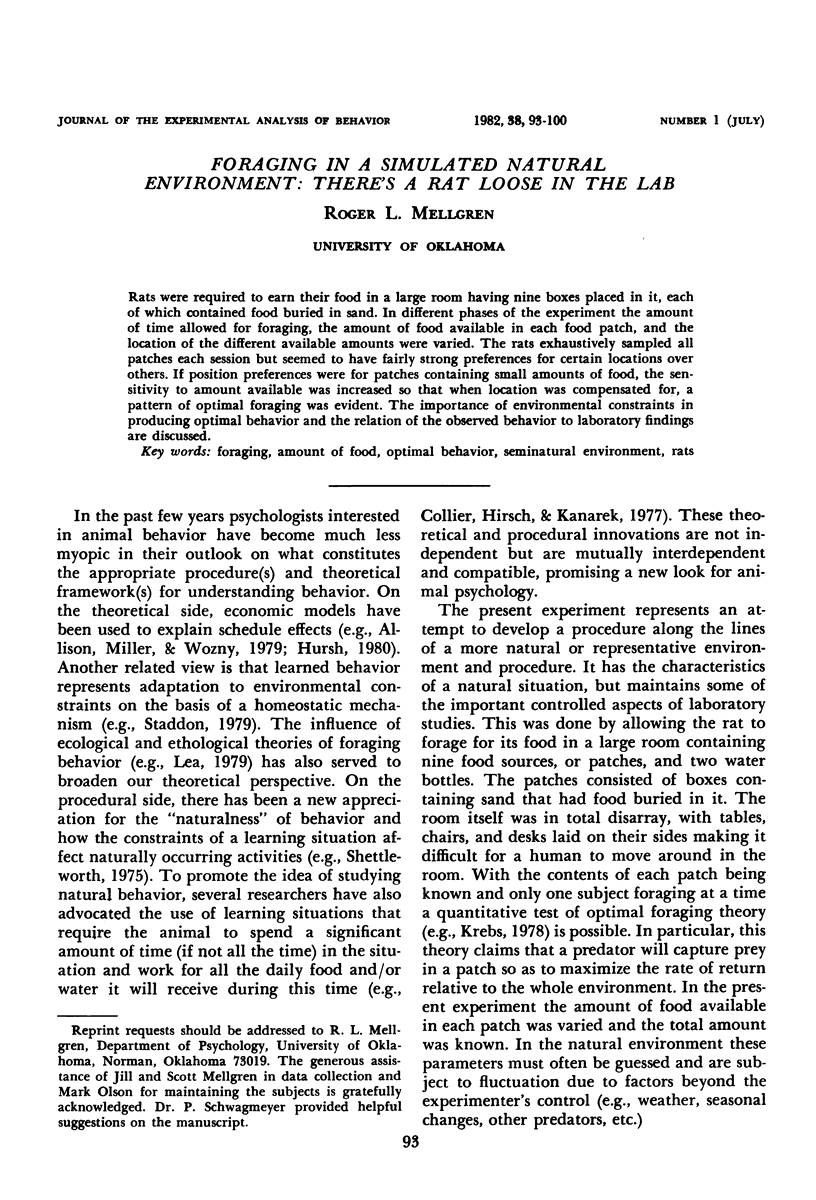
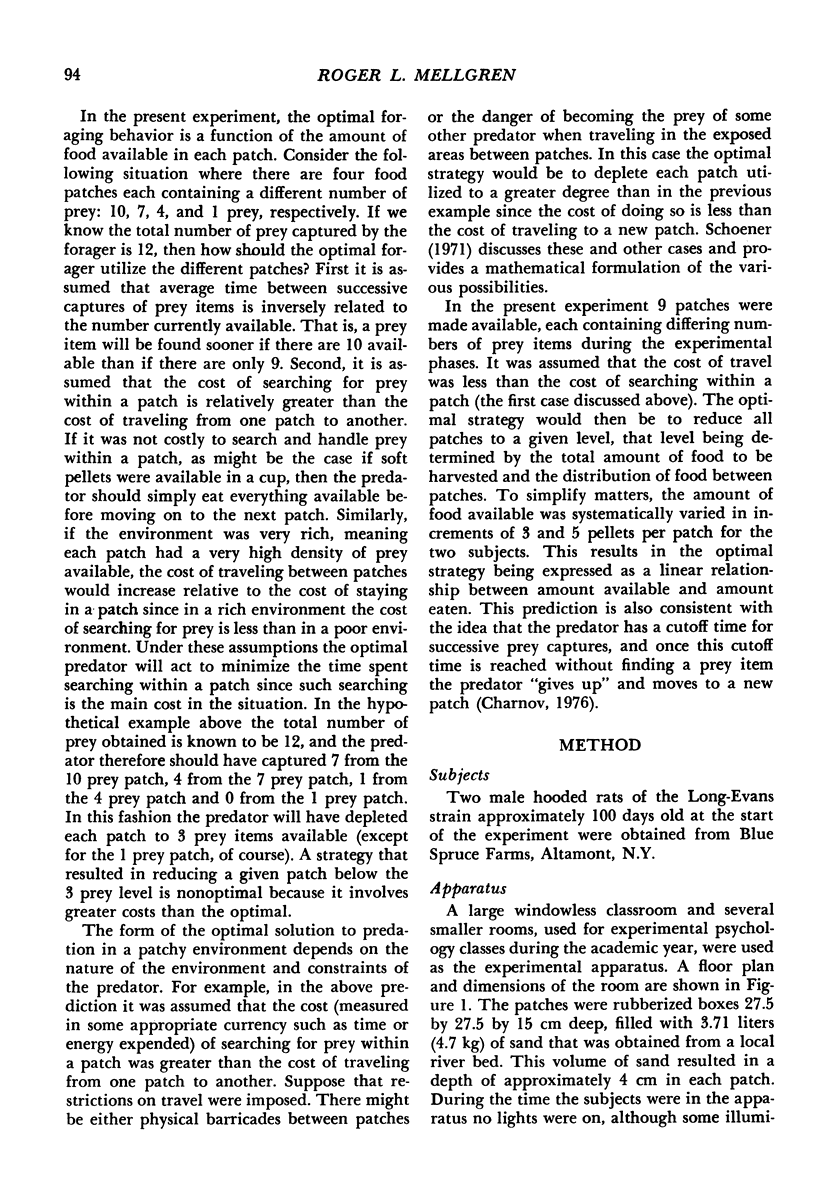
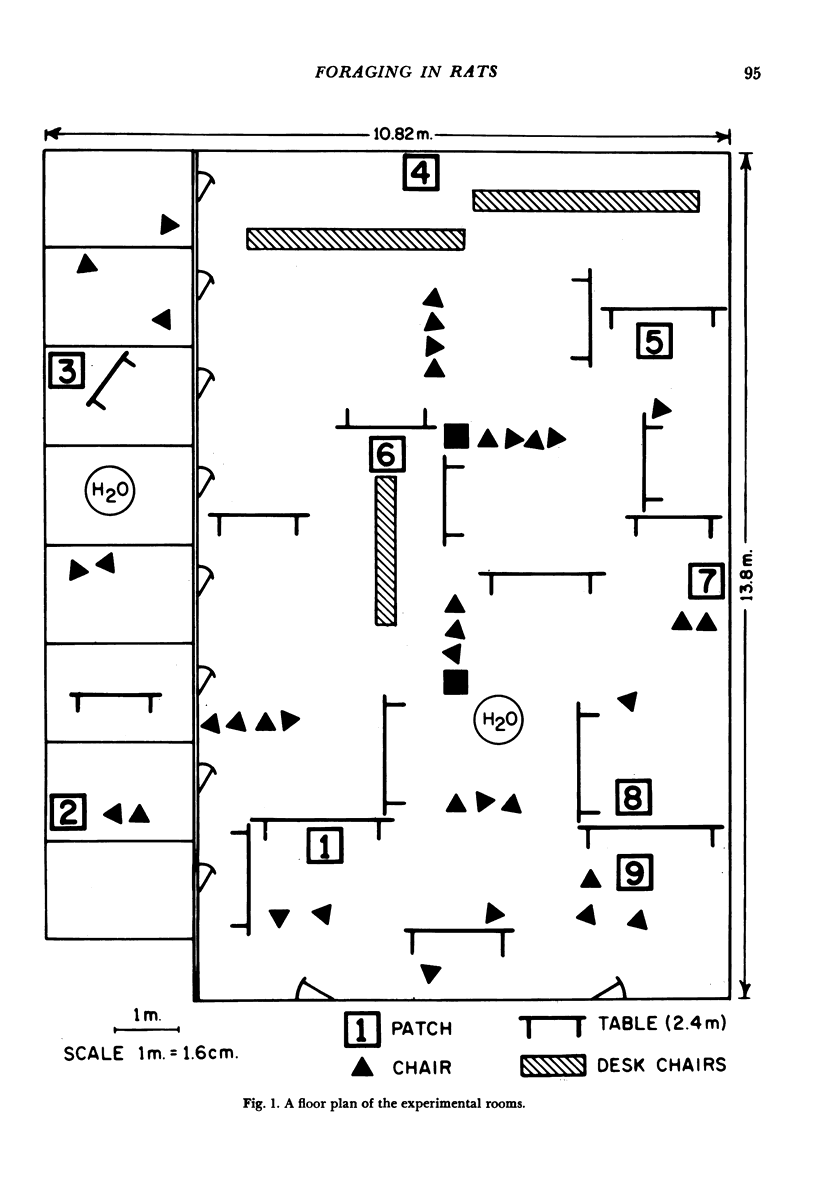

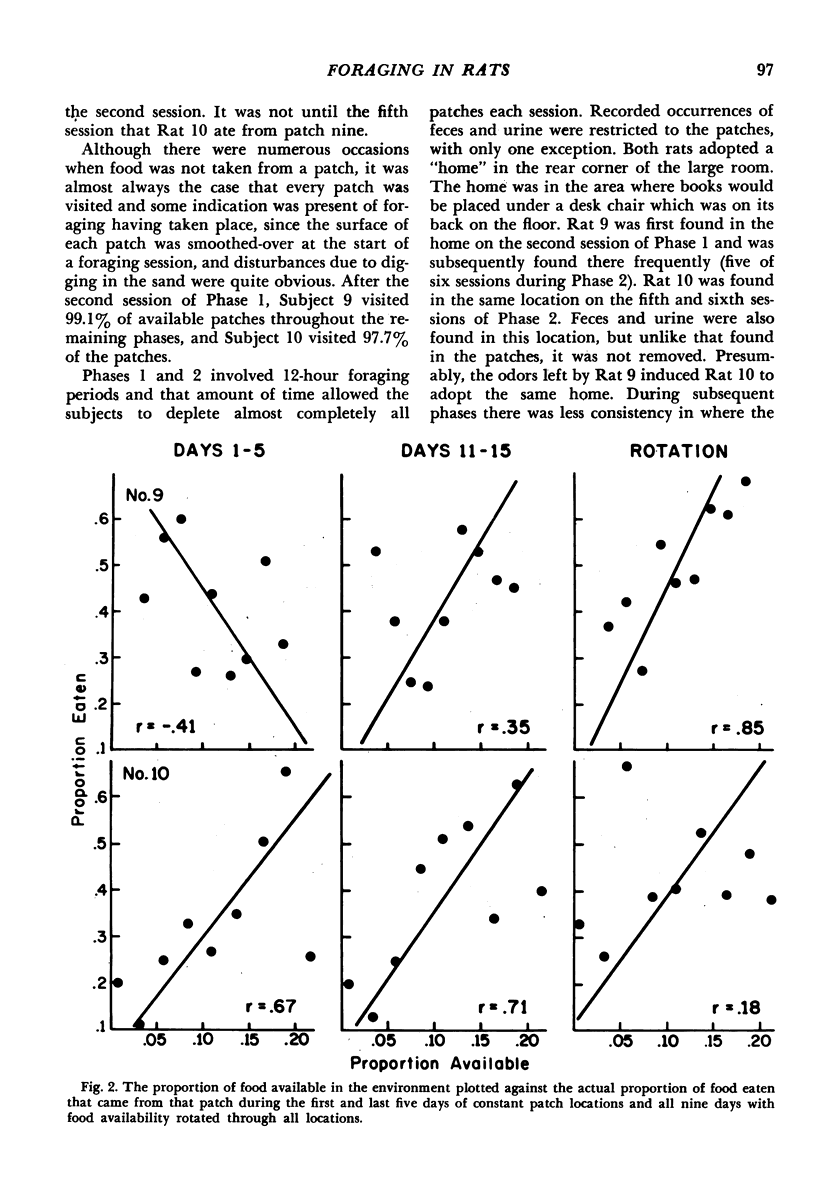
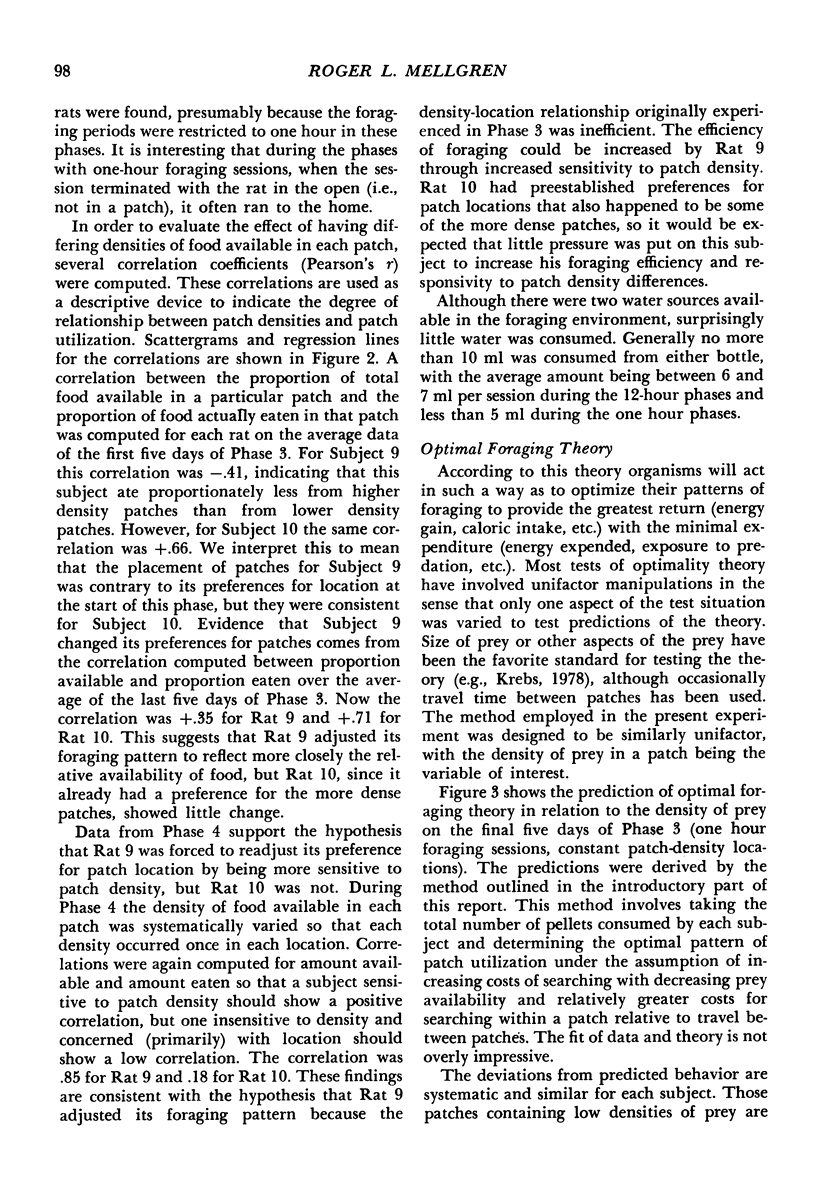
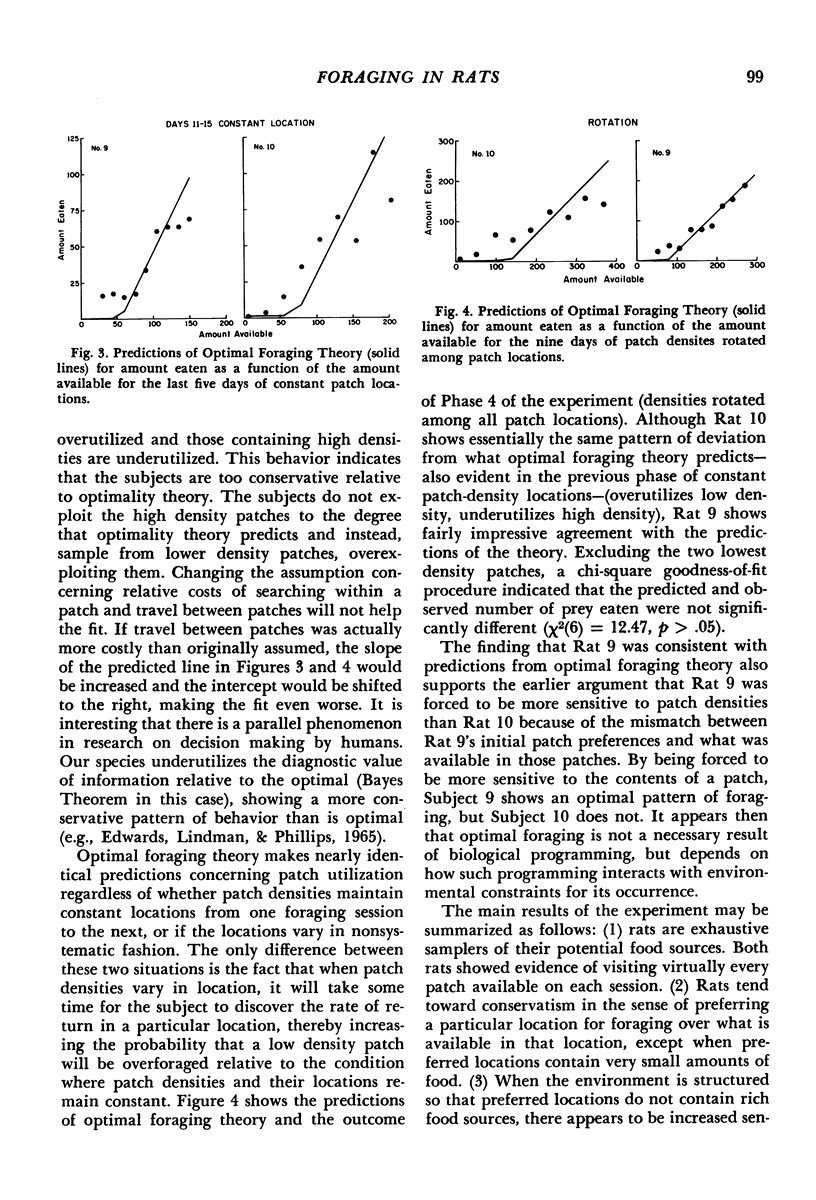
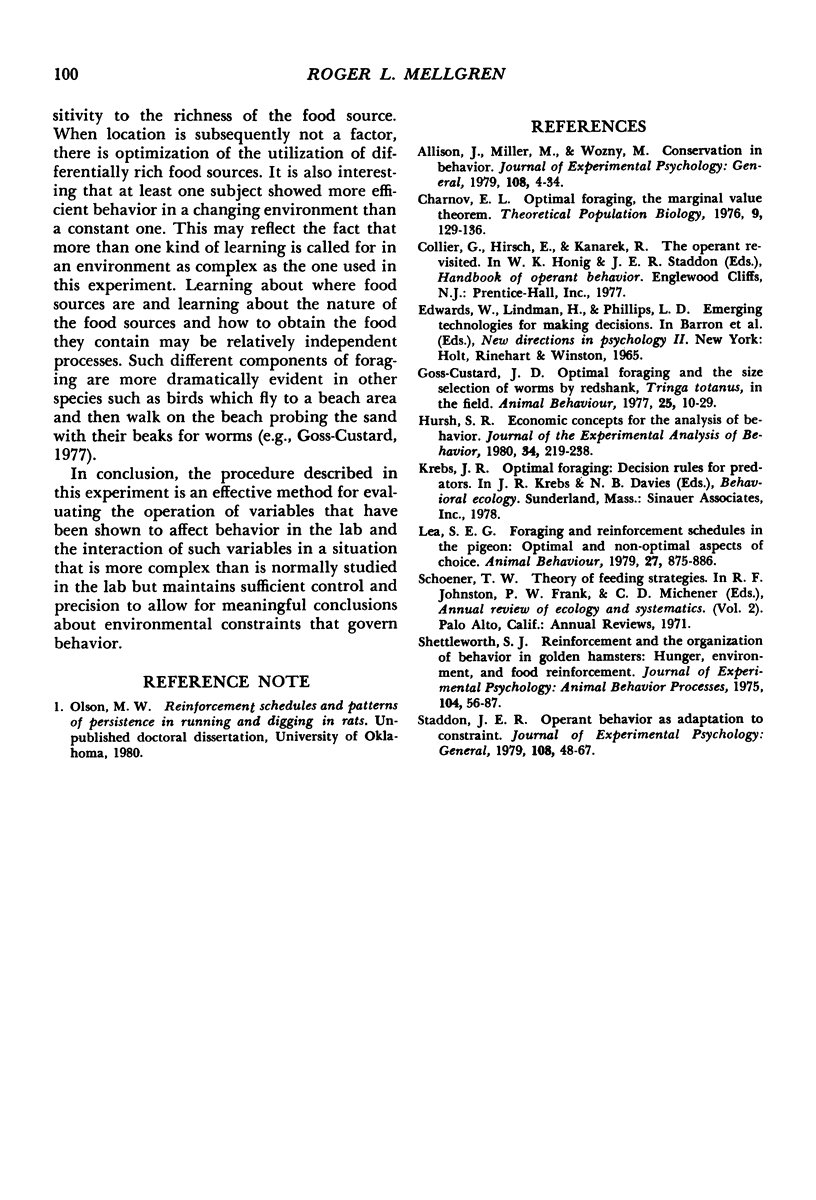
Selected References
These references are in PubMed. This may not be the complete list of references from this article.
- Charnov E. L. Optimal foraging, the marginal value theorem. Theor Popul Biol. 1976 Apr;9(2):129–136. doi: 10.1016/0040-5809(76)90040-x. [DOI] [PubMed] [Google Scholar]
- Hursh S. R. Economic concepts for the analysis of behavior. J Exp Anal Behav. 1980 Sep;34(2):219–238. doi: 10.1901/jeab.1980.34-219. [DOI] [PMC free article] [PubMed] [Google Scholar]


